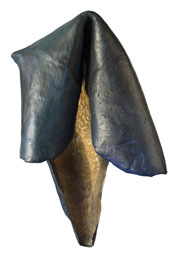Fiction Review
Tide Road
by Valerie Compton
Fredericton, NB: Goose Lane,
232 pp. 19.95$
When Sonia’s daughter Stella disappears without leaving a trace in circumstances most unclear, many presume that the poor girl must have accidentally fallen through a patch of thin ice in the nearby lake. Unsatisfied with the local authorities’ vague conclusions, the bereaved mother takes an increasingly internal approach to the investigation: whether the young woman’s vanishing was due to a fugue, a suicide, an accident or a murder by Stella’s ill-tempered husband, Sonia blames herself, and searches for the cause of the unfortunate event in her past actions – and inaction. The depressed, grieving mother wonders what she could have done differently: could she have provided Stella with more support, or shown more openness and understanding? Should she have prevented Stella from wedding the terrible Evvie? Should she have encouraged her to follow her passions and flourish instead of letting her make the same mistakes she has made, compromising herself because of her sex, and settling for a family life that choked her to death?
With Stella’s apparent death seeming so central to the novel, the reader may be tempted to believe that it is the mystery surrounding the sad event that will keep him reading – and it is indeed the type of lure we are used to be fed in a pop culture which values suspense, shock and tragedy. What promises to be a mournful yet titillating fiction does deliver more than one surprise, but they are not those we expect. Compton’s beautifully written novel captures us and drags us underneath the surface story, deep into the protagonist’s memories. Interestingly, Sonia’s excursion into her past leads her through an experience not unlike falling through thin ice into a cold, dark lake: the protagonist’s memories are blurry, but the pain she feels is always raw and vivid. As the story begins, the character increasingly loses touch with reality and becomes confused with conflicting and distorted thoughts and images in her search for a palpable meaning. And as Sonia relives and rewrites her past, her need for closure is met with ubiquitous feelings of guilt and regret before her life choices. Through initially distorted perceptions of the past and present, the main character finally manages to see, with impressive lucidity, the mistakes and wrong turns that mark her past, and the opportunities that present themselves to her at the present time.
Sonia’s depressive state, which, if seemingly stagnant at first, leads the reader to discover the protagonist’s life-altering reflections on coping with loss and change on the one hand, and on women and identity in the early 20th century rural family on the other. In a thread of thoughts which range from the loss of her daughter to the loss of her own self-identity, Sonia gradually begins to understand the traditional role women are commonly expected to play as a form of self-denial. Whereas the protagonist’s reflections begin with self-accusation and with the feeling of failure as a mother, her thoughts slowly turn towards feelings of jealousy and resentment towards men. Sonia, whose true passions did not fit in the mold imposed upon women, realizes that she had been compromising her individuality and desires in favor of her duties as a member of the “second sex”. This, the protagonist believes, is what really killed her daughter, and this is what is threatening to drag her under the ice as well.
Ironically, the “man’s job” Sonia has fought to obtain and keep is that of a lighthouse keeper. While this position may be interpreted as a source of light and guidance for others, it also entails waiting, watching others move on, and stagnating in the one and same place. Sonia looks at the sea for freedom, but is nonetheless firmly rooted in routine, responsibilities and loneliness. The protagonist’s realizations are not followed by an immediate intervention on her part either: her deep appreciation of photographs, for example, betrays her obsession with the past and her reluctance to let go. However, the bleak tint of winter does eventually yield before a growing promise of new perspectives. It is Sonia’s struggle to acknowledge and eventually reach for these brighter and more colorful perspectives that keeps us turning the pages avidly in anticipation: as the story progresses, the protagonist comes closer to that place where she fell through, and with that painful test also comes the chance to step out of the annihilating cold and into a place of warmth, beauty, and, most of all, life.





No Comments so far ↓
There are no comments yet...Kick things off by filling out the form below.